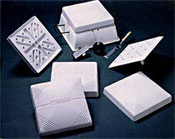 Since 2007, Little League Baseball® and Little League Softball® have mandated the use by all leagues of bases that disengage their anchor(e.g. "safety-release bases").
Since 2007, Little League Baseball® and Little League Softball® have mandated the use by all leagues of bases that disengage their anchor(e.g. "safety-release bases").
If your child is playing for another baseball or softballnational organization you may want to check with them as this rulepertains only to Little League Baseball® and Little League Softball®Here's why Little League adopted this long-overdue safety rule:
-
Base-sliding injuries are common. According to the CDC, sliding into a base causes more than 70 percent of recreational softball injuries and nearly one-third of baseball injuries, including ankle sprains. Most base-sliding accidents result from judgment errors by the runner, poor sliding technique, and inadequate physical conditioning.
-
Standard bases don't move. A traditional stationary base, bolted to a metal post and sunk into the ground, is a rigid obstacle for an athlete to encounter while sliding and poses a clear safety hazard.
-
Safety-release bases give way. A safety-release base is snapped onto grommets attached to an anchored rubber mat holding it in place during normal play. When a runner slides into the base, it is dislodged to avoid direct contact and injury. (During normal base running, the safety-release base is stable and will not detach.). Safety release bases leave no holes in the ground or parts of the base sticking up from the ground when the base is released.
-
Safety-release bases dramatically reduce injuries. In one study, the use of the safety-release bases in recreational softball leagues resulted in a 98% reduction in injuries and 99% reduction in acute health care costs. Another study, conducted by David Janda, M.D., Director of the Institute for Preventative Sports Medicine in Ann Arbor, Michigan, found that sliding injuries in college and minor league professional baseball were reduced by 80% when Rogersbreak away bases were used.
-
Safety-release bases do not change the game. Safety-release bases decrease the number of injuries without player involvement or altering the play, excitement, entertainment, competition or interest in the game.
-
Safety-release bases are cost-effective. It only costs about $400 to equip a field with safety-release bases.
-
Experts recommend safety-release bases for every field. To prevent and reduce the number of sliding injuries, many experts, including the American Academy of Orthopaedic Surgeons, urge all communities to install safety-release bases in their playing fields. You should encourage your town, city, or league to use safety-release bases.
* Remember that not all youthbaseball programs are affiliated with Little League. If your league issponsored by another national youth baseball organization, check to seewhat its rules are on the use of safety-release bases.
Updated February 14, 2010








